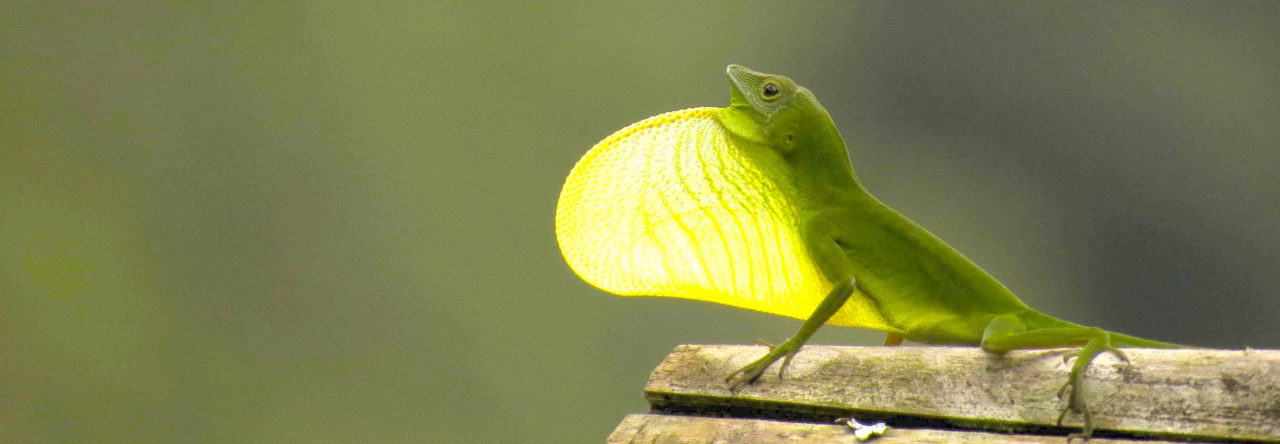
Large prey taken by brown anoles (top two photos) and Swinhoe’s tree lizard (bottom two).
Starting in the 1970s, Caribbean anoles became a model system for studying community ecology, especially interspecific competition. Such studies generally focused only on anole species. Though seemingly chauvinistic, this anolocentrism is reasonable in many localities, where resource competition probably is primarily between anole species (although there was a boisterous debate in the 1980s on the extent to which anoles and insectivorous birds might compete).
However, this is not always the case. In Central and South America, for example, the much greater non-anole saurifauna than on Caribbean islands makes it likely that anoles may experience much greater resource competition with non-anole lizards, as well as other taxa. And the same may be true for anoles introduced to far-flung regions.
Take, for example, the brown anole in Taiwan, which occurs with the native Swinhoe’s tree lizard. Like brown anoles, the agamid is found on the ground and low on tree trunks, and thus might be considered a trunk-ground anole. Being only slightly larger than brown anoles, the tree lizard probably eats much the same food. Gerrut Norval posted a while back on the amazingly large prey that brown anoles and tree lizards eat in Taiwan, and now he and colleagues have published a paper documenting the extensive diet overlap between the species (Gerrut previously provided a post on the background to this study, including some interesting information and photographs on the research methods). Very likely they are strong competitors, although Norval et al. argue that the size discrepancy means that the effect is asymmetric. However, at least in some areas, brown anoles have much higher densities, meaning that their aggregate effect on tree lizards may be just as great as the reverse.
Brown anoles are most dense in hot, open areas, whereas the tree lizards reign supreme in shaded habitats, suggesting that environmental effects mediate the outcome of interspecific interactions between the two species. In addition, this difference indicates that reforestation efforts would be a good conservation move to stem the effect of the brown anole invasion.



 Two days ago,
Two days ago, 



 Don McLeish has
Don McLeish has 
